At the edge of the lush volcanic crater that holds the twin lakes of Sete Cidades, cloaked in mist and silence, stands a structure that feels lifted from a dream—or a horror film. The Monte Palace Hotel is a hulking, modernist ruin, perched just above one of the most photographed views in the Azores. Once imagined as a luxury retreat, the hotel now sits empty, overtaken by moss, fog, graffiti, and time.
What’s left is a space in transformation—no longer what it was, not yet something new. Its concrete corridors, gaping windows, and silent rooms are now a gallery of improvised murals and peeling walls, a place of textures and shadows. And in this stillness, something unexpected happens: the Monte Palace has become one of the most strangely beautiful places on the island to explore.
A brief and speculative history
Construction on the Monte Palace began in the late 1980s with the ambition of creating a five-star destination in the Azores. The location was strategic—on the rim of the crater with panoramic views of both the green and blue lakes, and a dramatic horizon that shifts with the island’s mercurial weather. At 88 rooms spread across multiple levels, the hotel was to offer fine dining, conference facilities, and access to one of the most breathtaking landscapes in the Atlantic.
But despite its location and grandeur, the hotel opened for only a very short time. There are rumors of financial issues, low occupancy, and logistical challenges. Some say it operated for less than two years before closing its doors. Since then, ownership has changed hands several times, with discussions about redevelopment, but nothing has ever come to fruition.
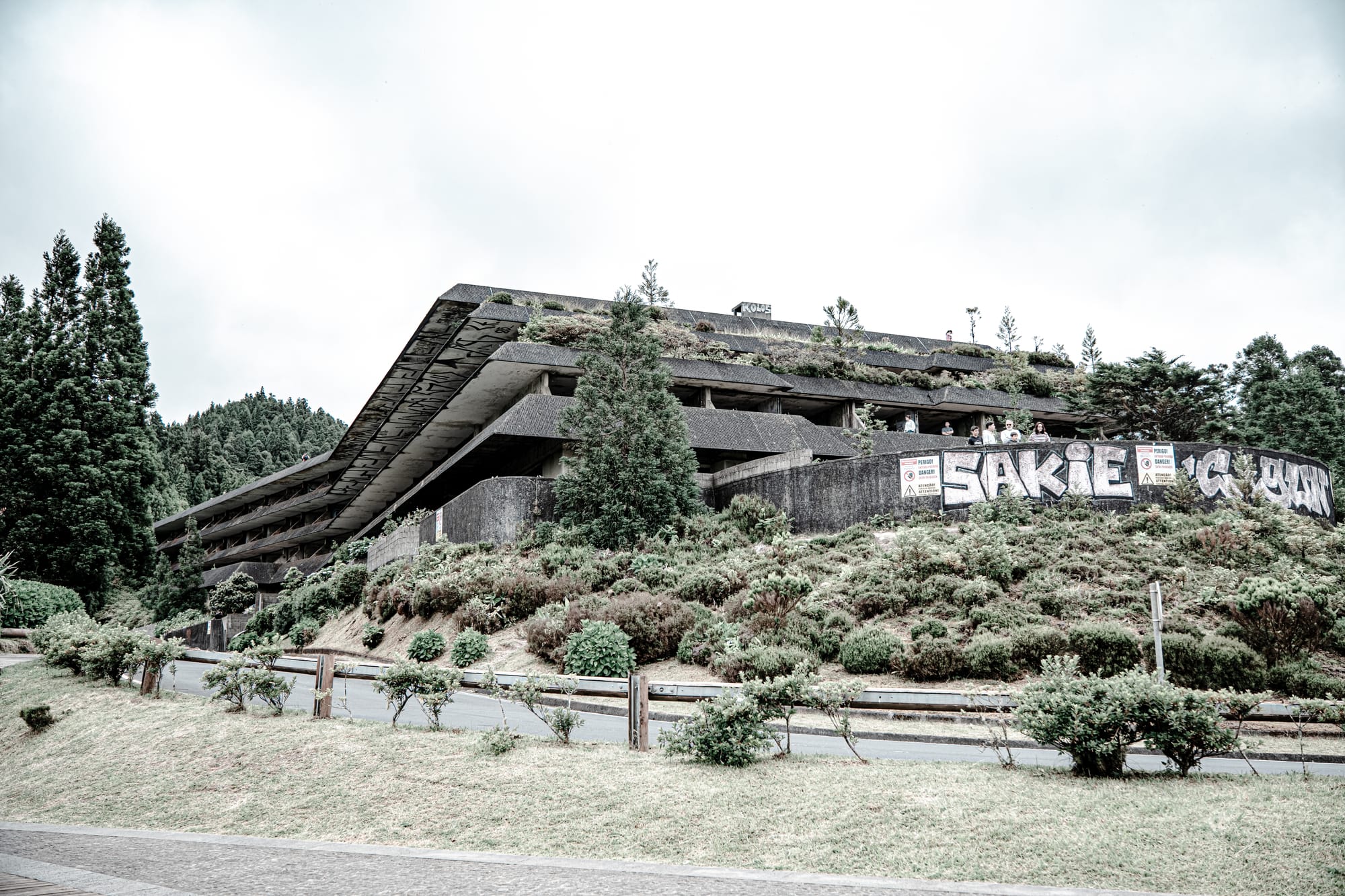
In the decades since, the building has become a shell—windows shattered, stairwells worn, furniture long gone. Yet what remains is deeply atmospheric. The angular lines of the building, the overhanging balconies, the enormous open-air atriums, all give it a cinematic weight. You walk through it not as you would a ruin, but as though you are moving through a film set.
The view from nowhere
Step into one of the top-floor rooms and the first thing you’ll notice is the silence. Then the wind. Then the view.
Every room on the western face looks out across the lakes of Sete Cidades. On a clear day, you’ll see the sweep of farmland, the winding road that leads down to the village, and the glinting surfaces of the twin lakes—one green, one blue—divided by a narrow bridge.
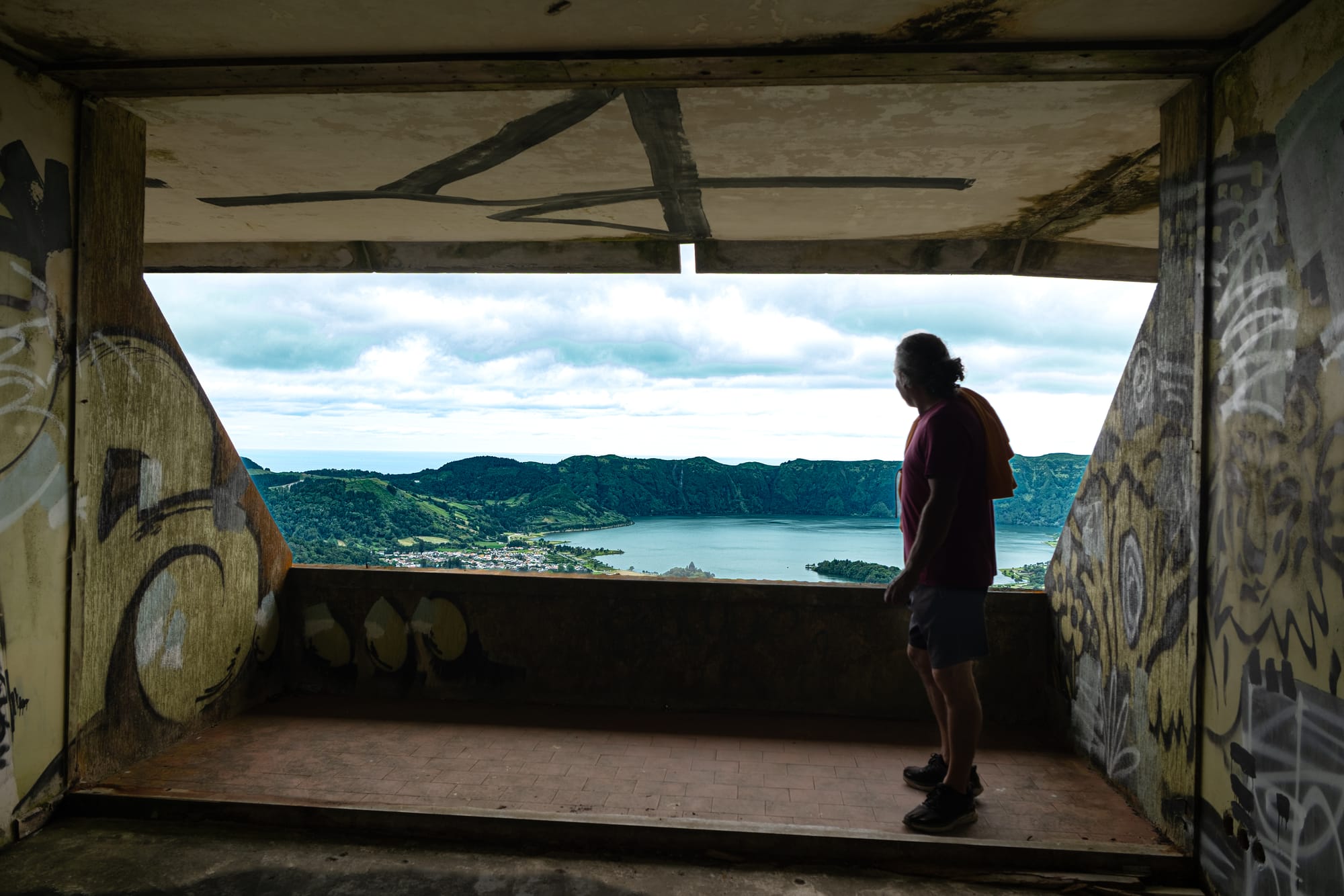
It’s a view that makes you pause, and from the elevated frame of the abandoned hotel, it feels both grand and strangely private. The windows are gone, but the concrete frames remain, slicing the view into quiet vignettes. If you walk into one of the end suites, the framing of the lake is almost perfect, as if it were built to be a gallery rather than a guest room.
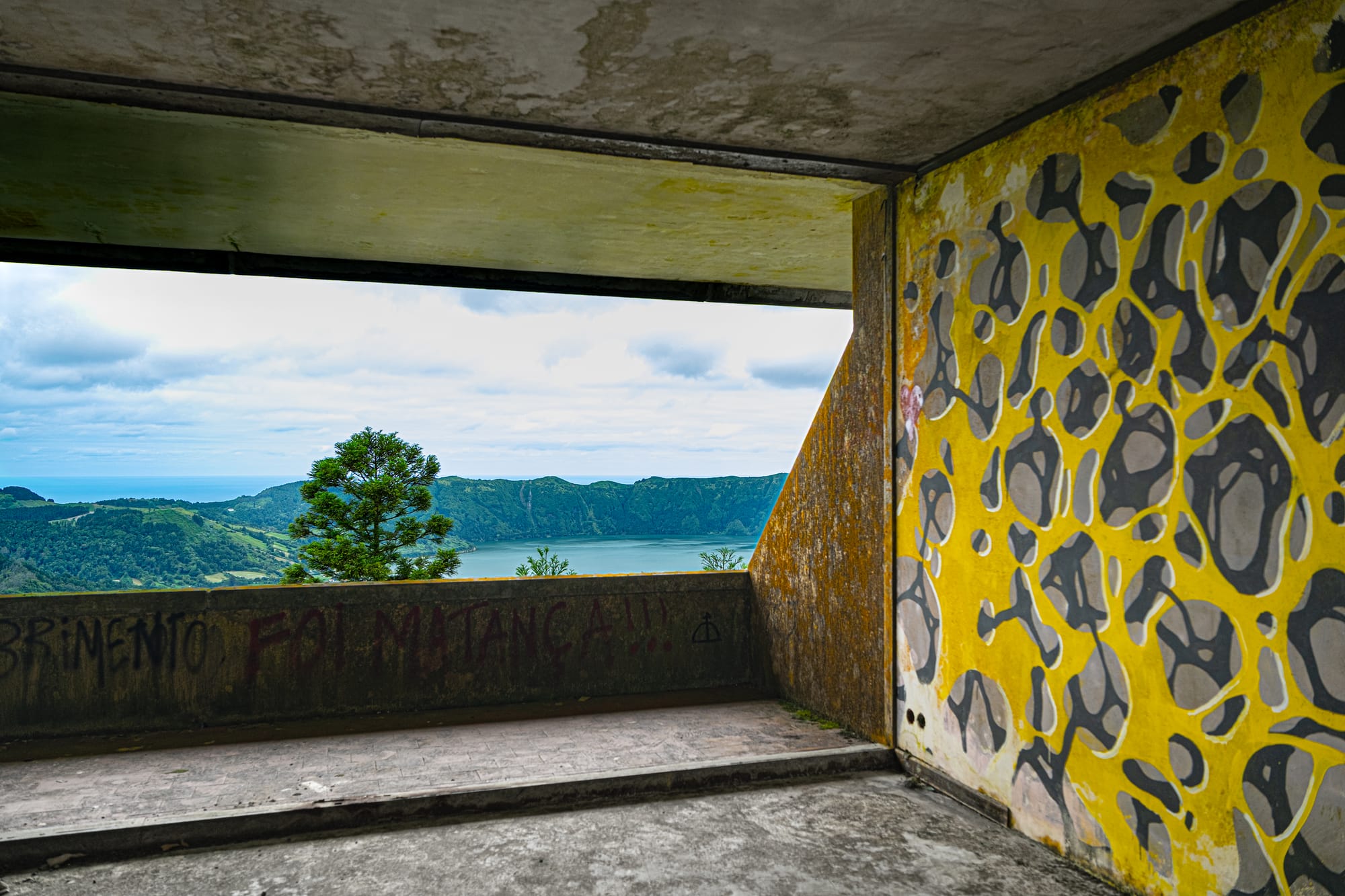
The walls are crumbling, the ceiling is streaked with moisture, and ferns have begun to grow through cracks in the tiles.
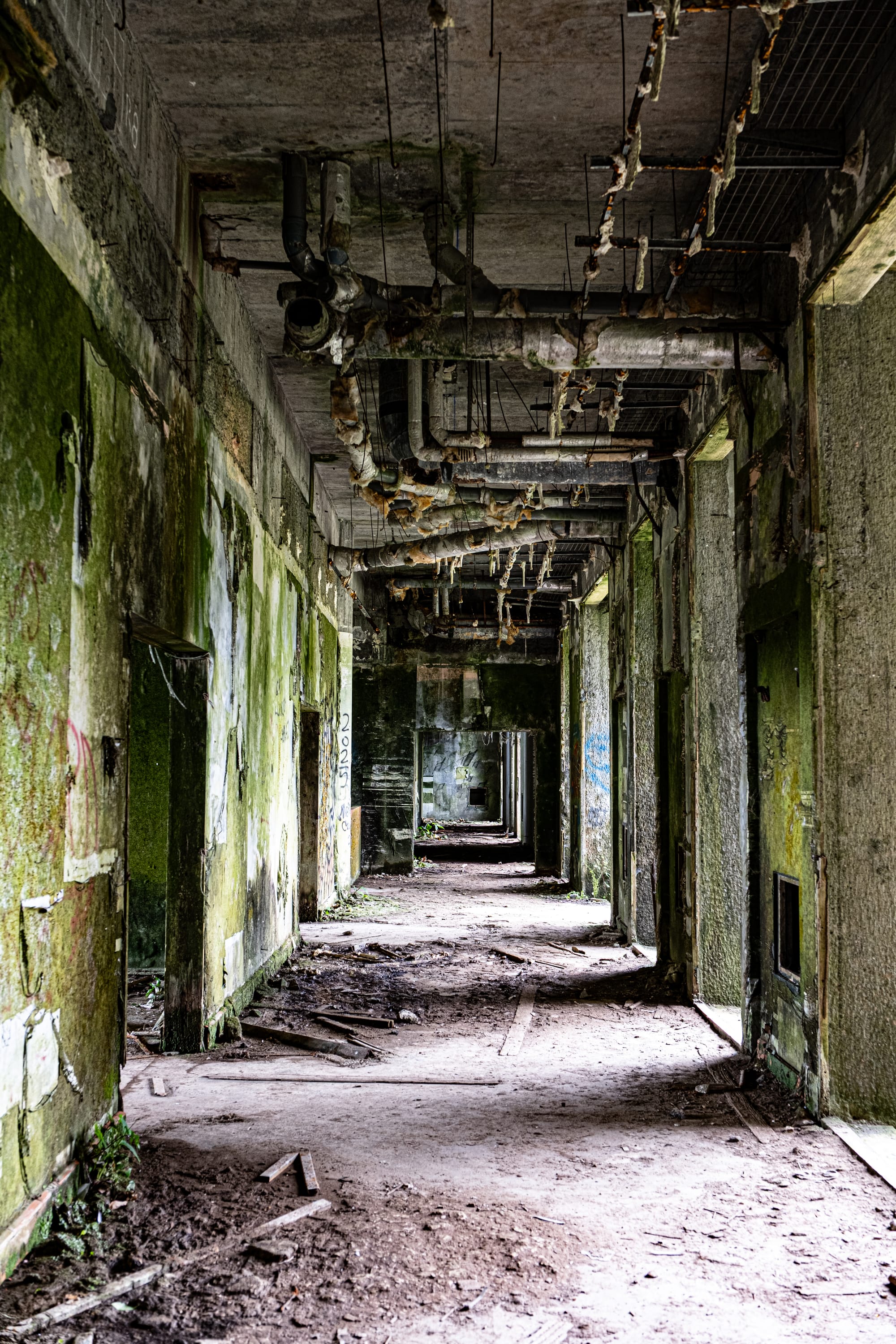
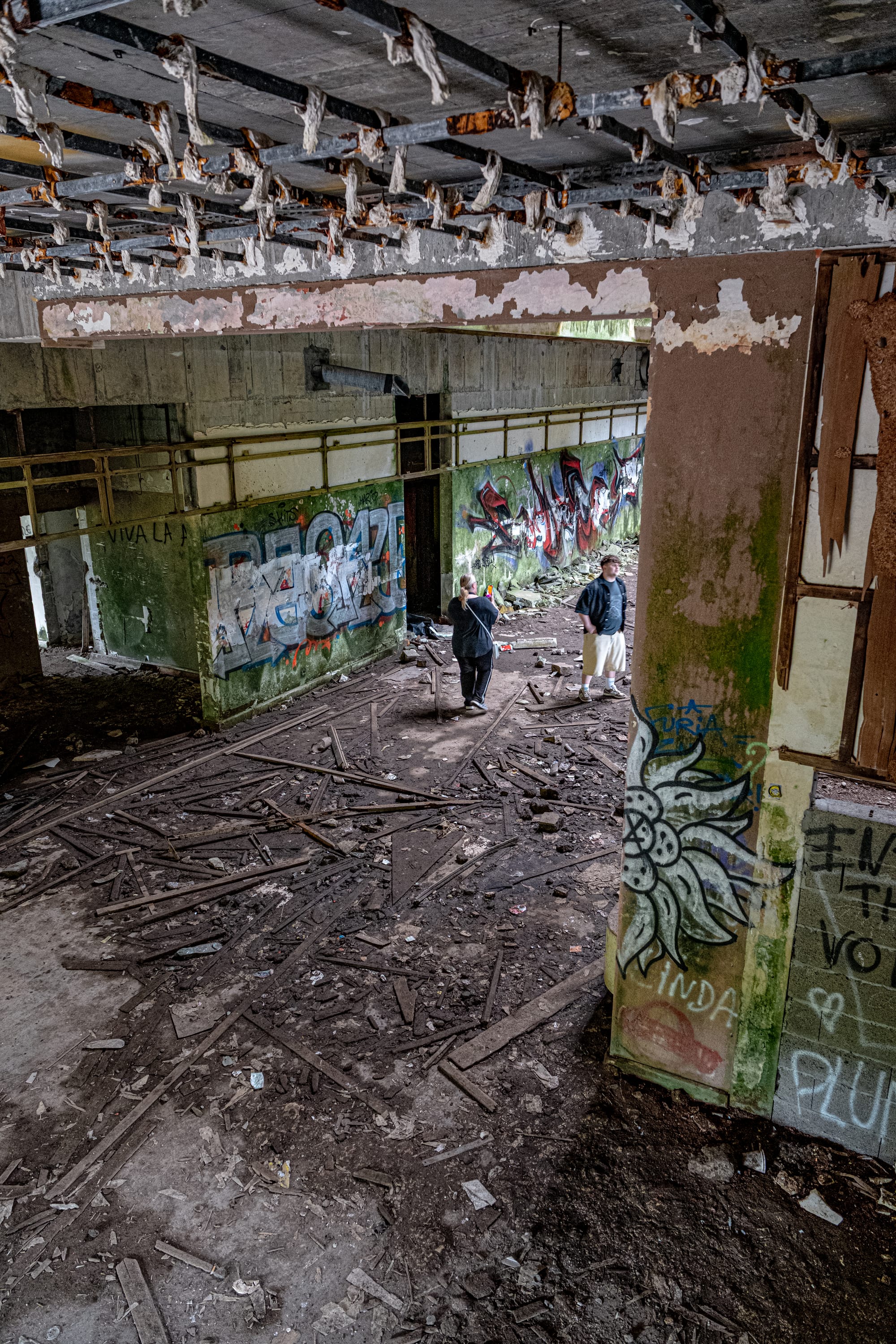
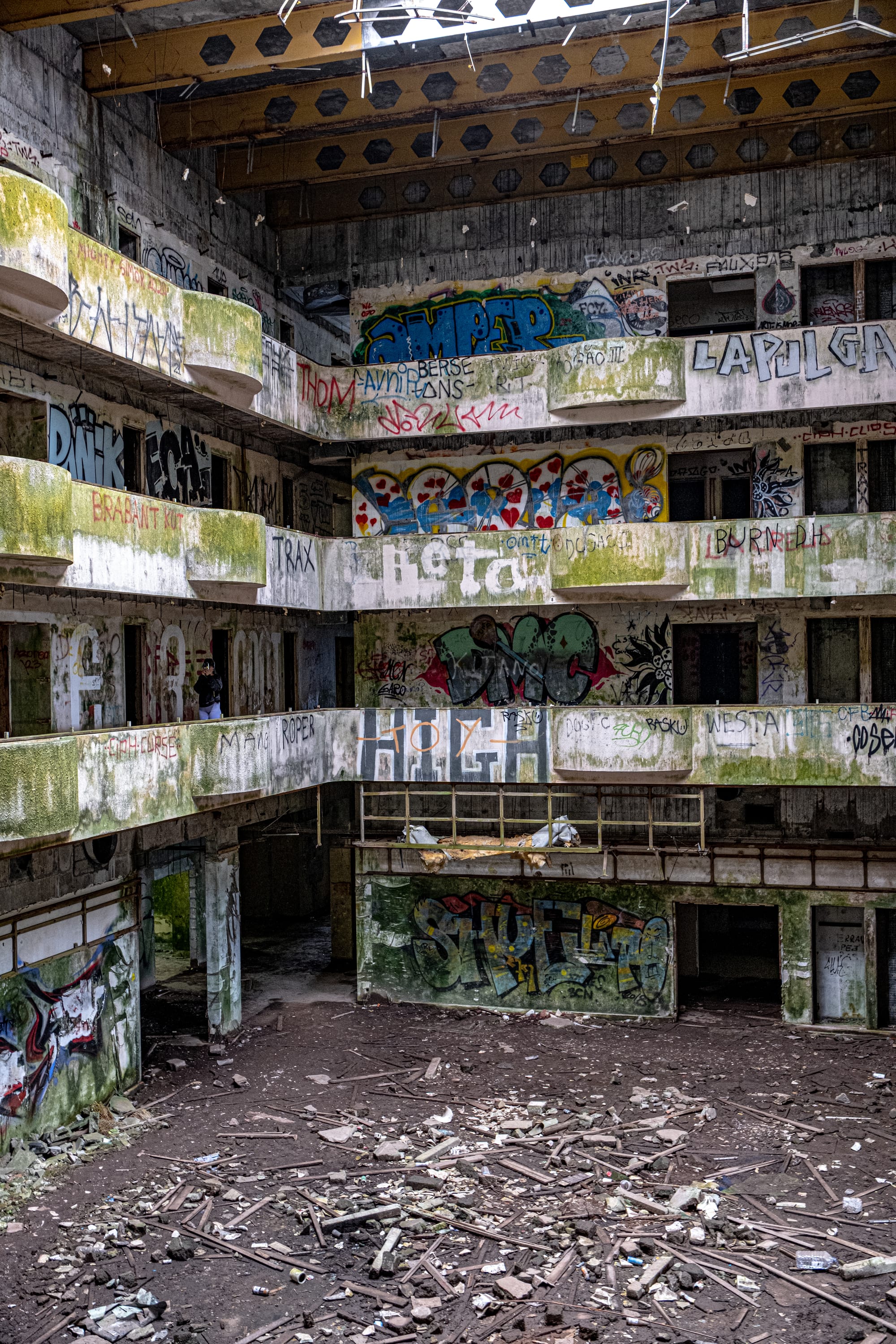
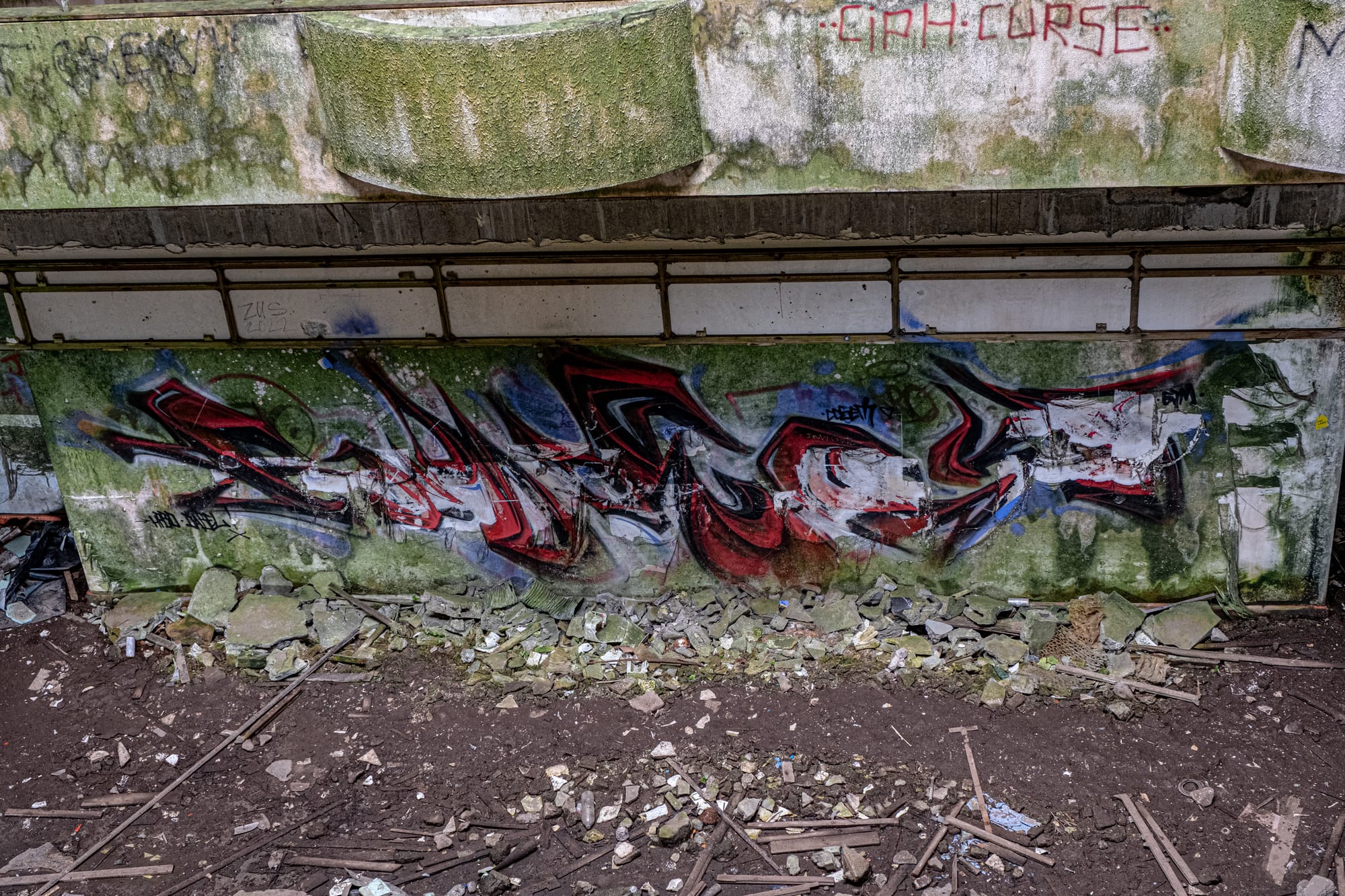
Mossy corridors, broken wood, and graffiti-scrawled atriums turn the Monte Palace into a ruinous maze
And yet, standing there, it's hard not to feel that something remarkable is still happening inside the Monte Palace.
Murals, graffiti, and quiet interventions
What sets this abandoned hotel apart is not just the setting or the structure—but the art that now lives inside it.
Across dozens of former rooms, stairwells, and balconies, artists have left traces—some small, some elaborate. In one room, a grayscale portrait of a woman’s face emerges from layers of yellow and green, her eyes filled with a kind of searching.
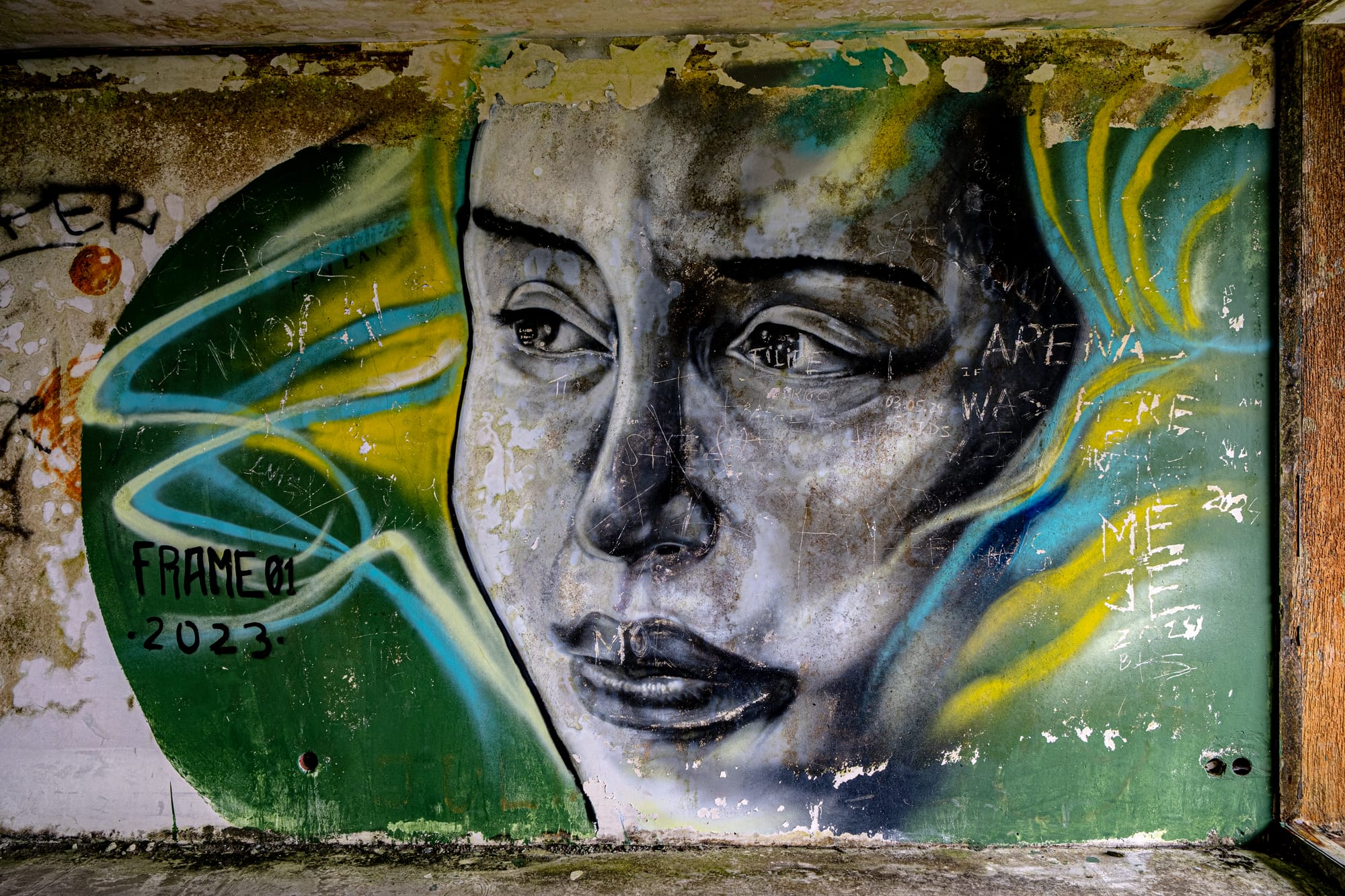
In another, a spray-painted figure seems to stare directly at the lake, as if watching it change.
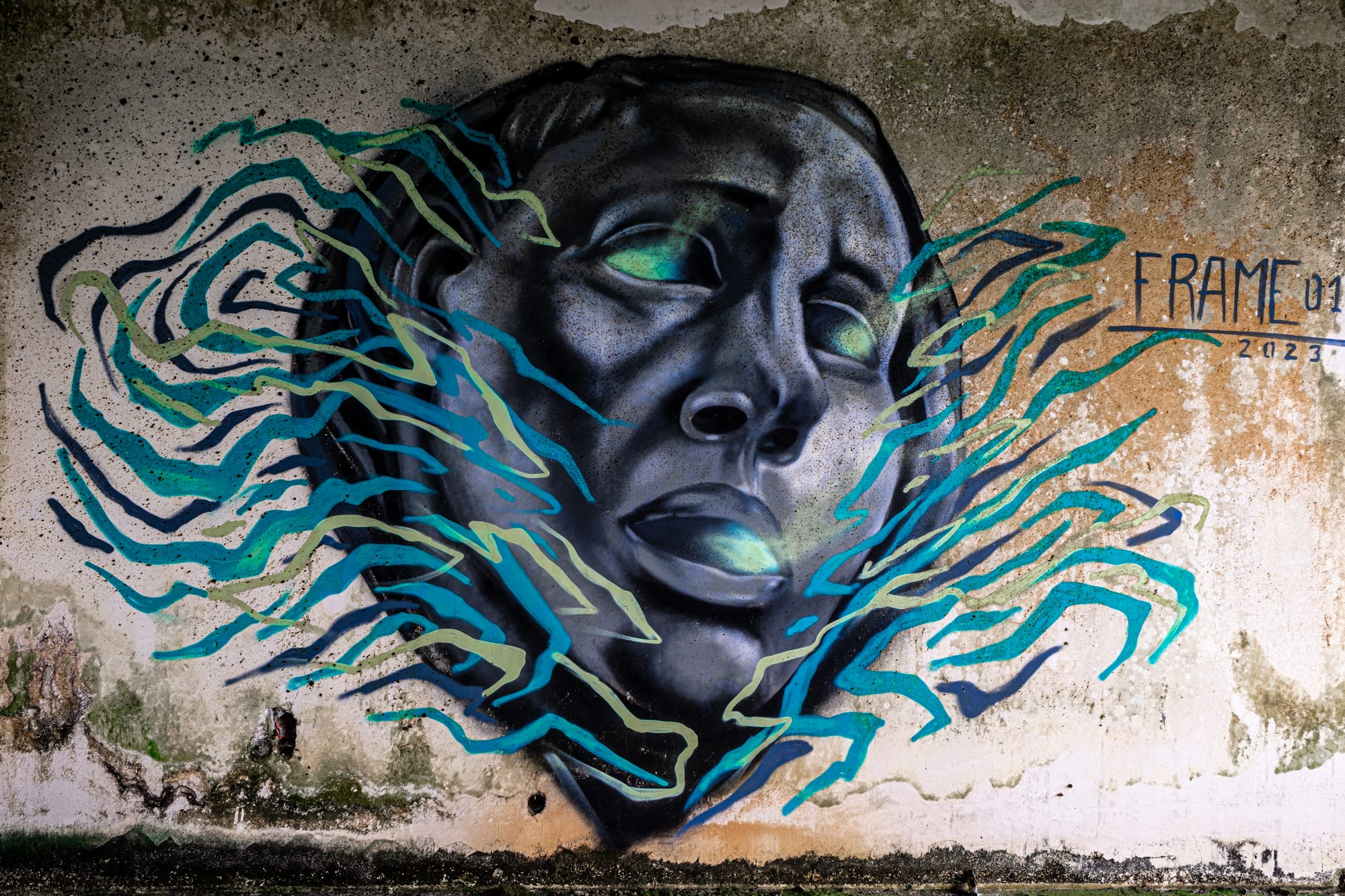
There’s a wall covered in looping calligraphy, intricate and unreadable, a kind of visual rhythm.
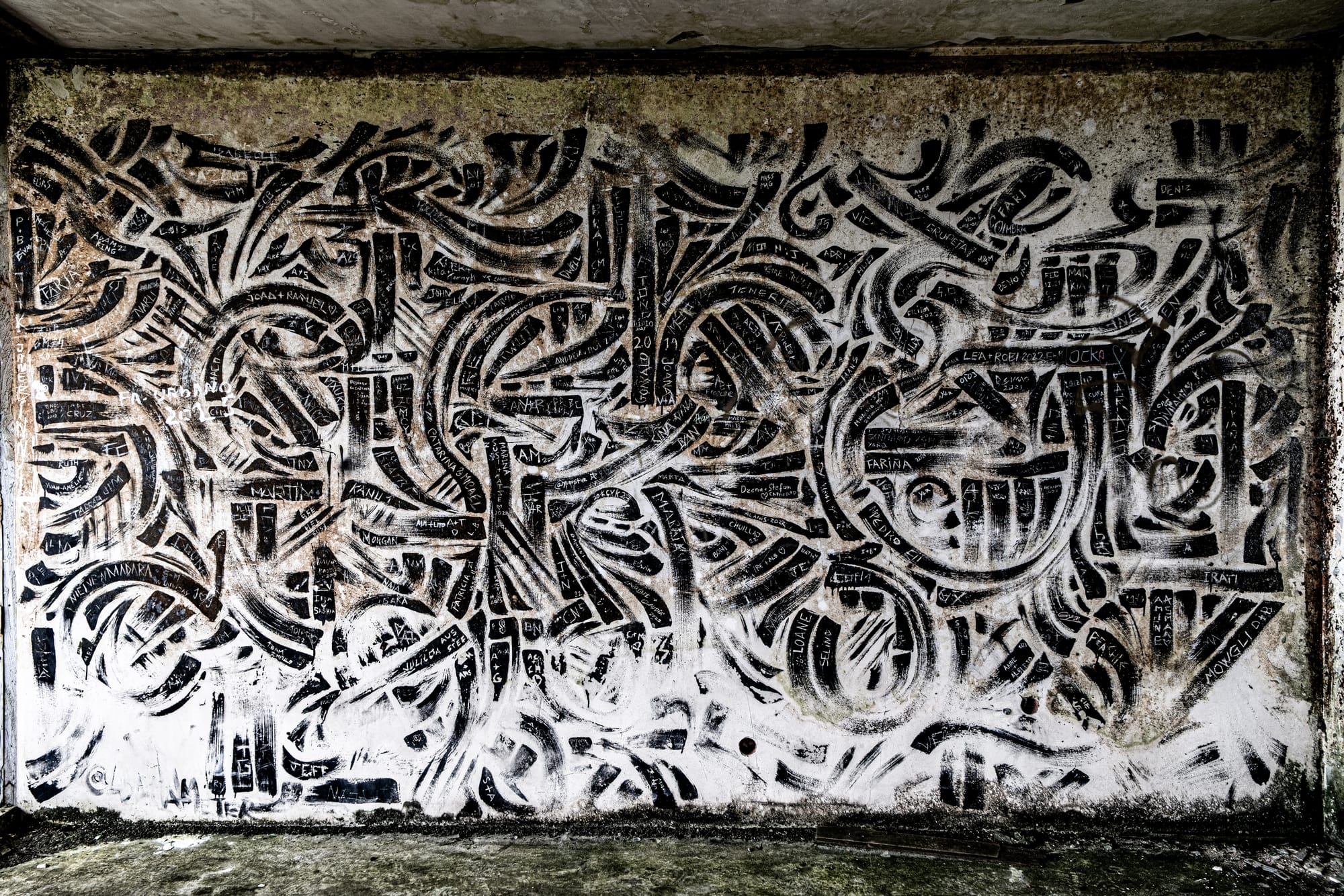
Another corner features floral realism—delicate pink and white petals painted on raw concrete, tagged only by the name Hortense Barre.
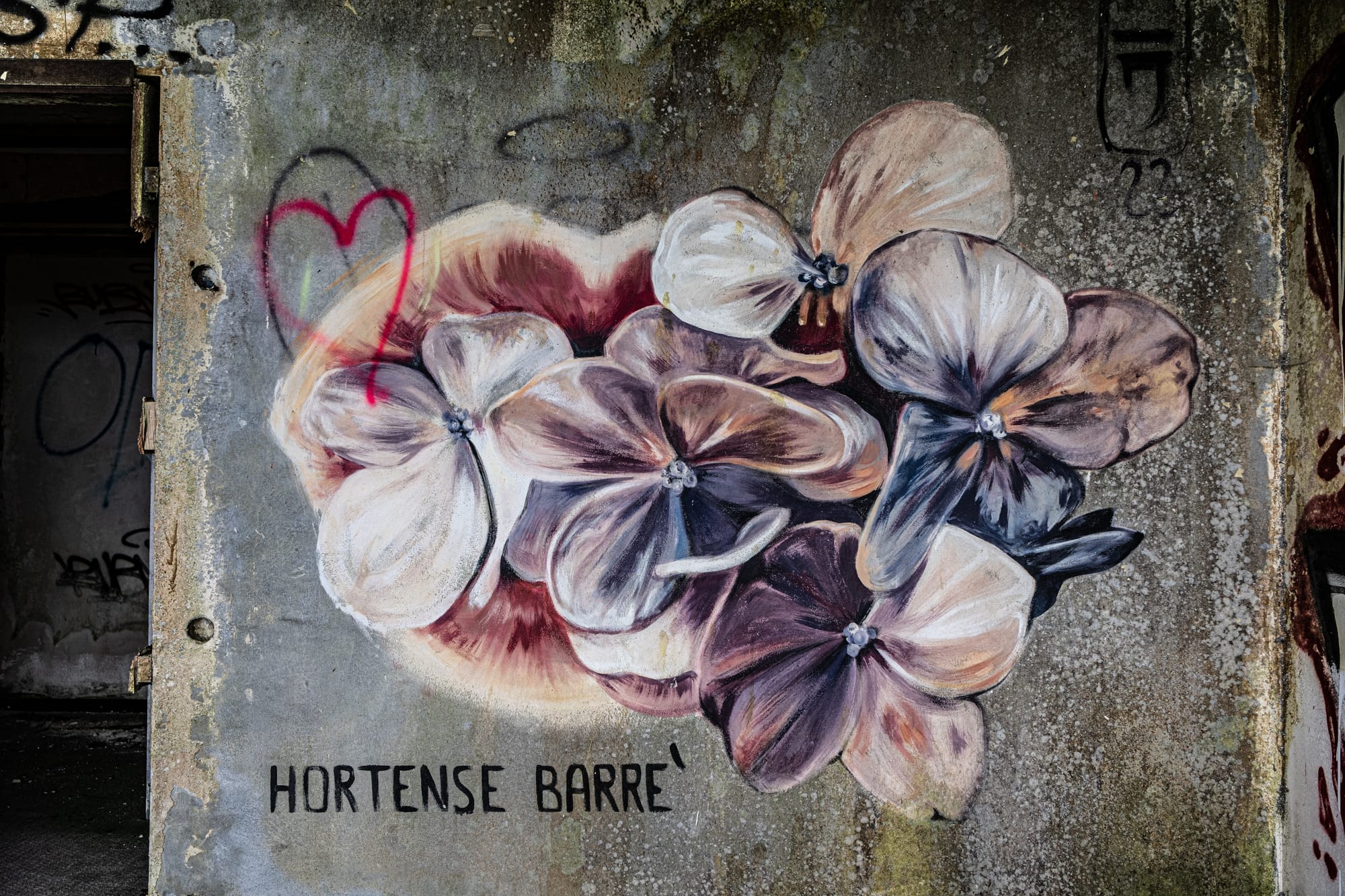
Scattered throughout the building, simpler tags and layered graffiti shift the mood from elegiac to anarchic.
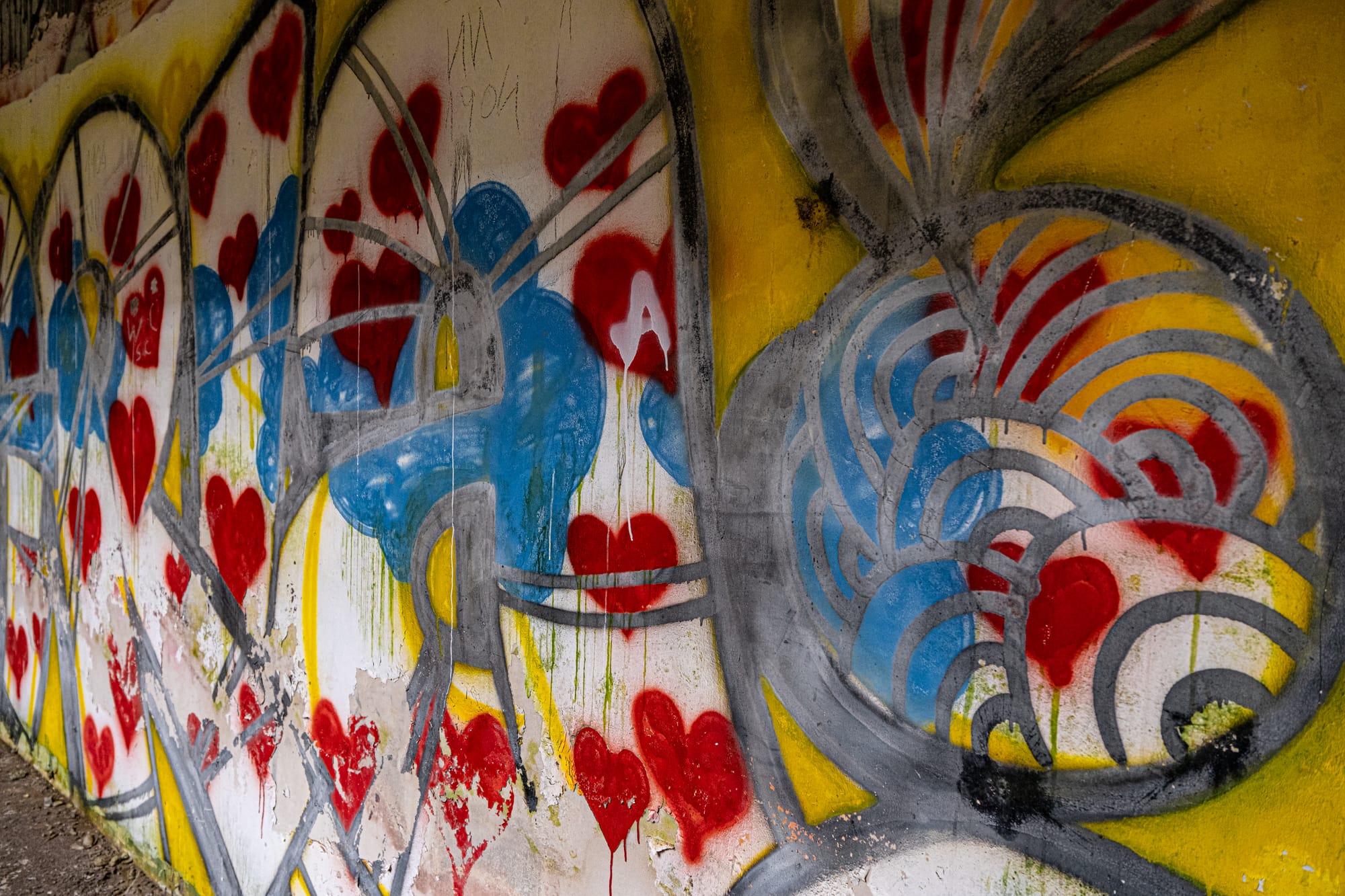
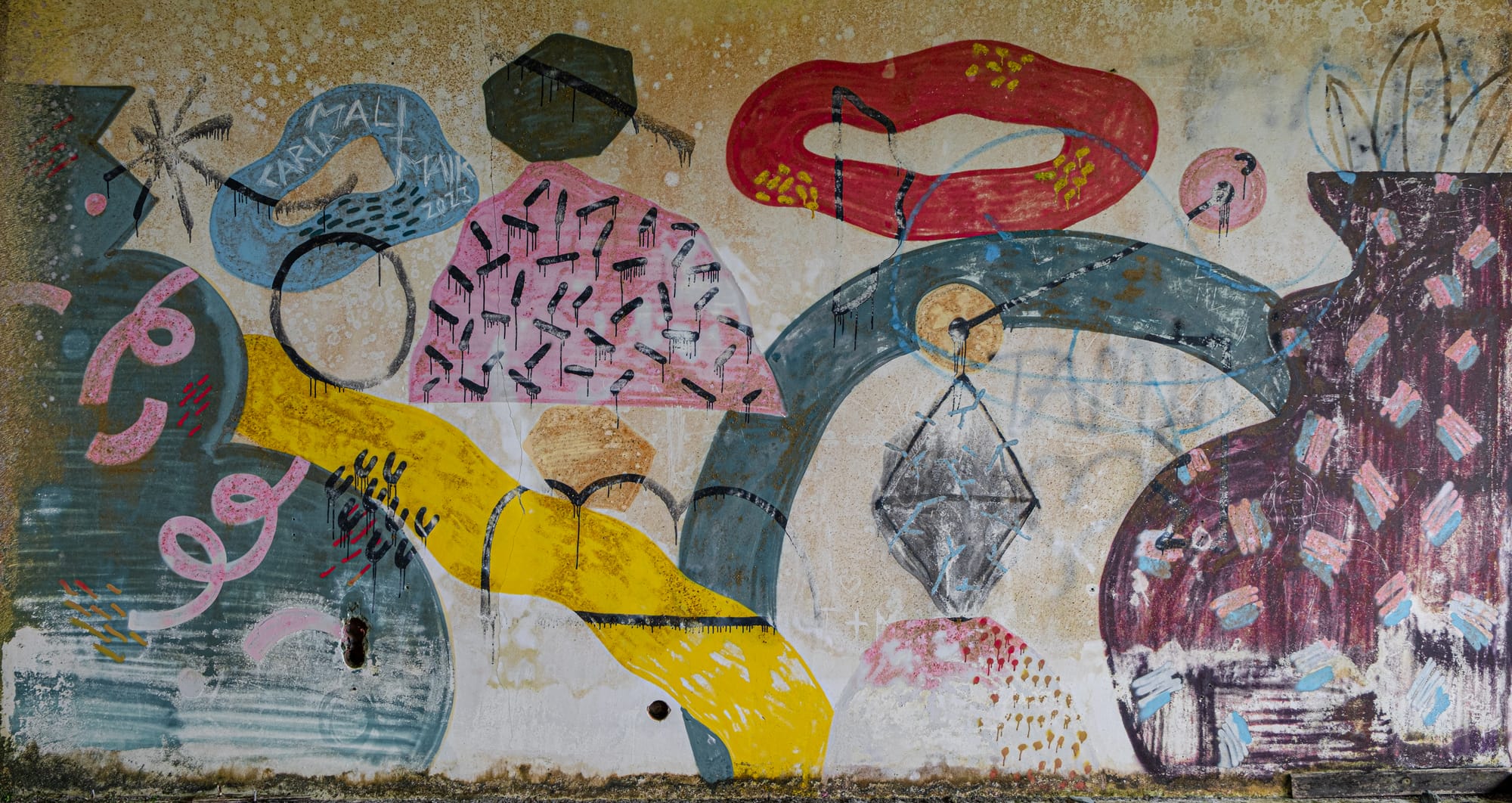
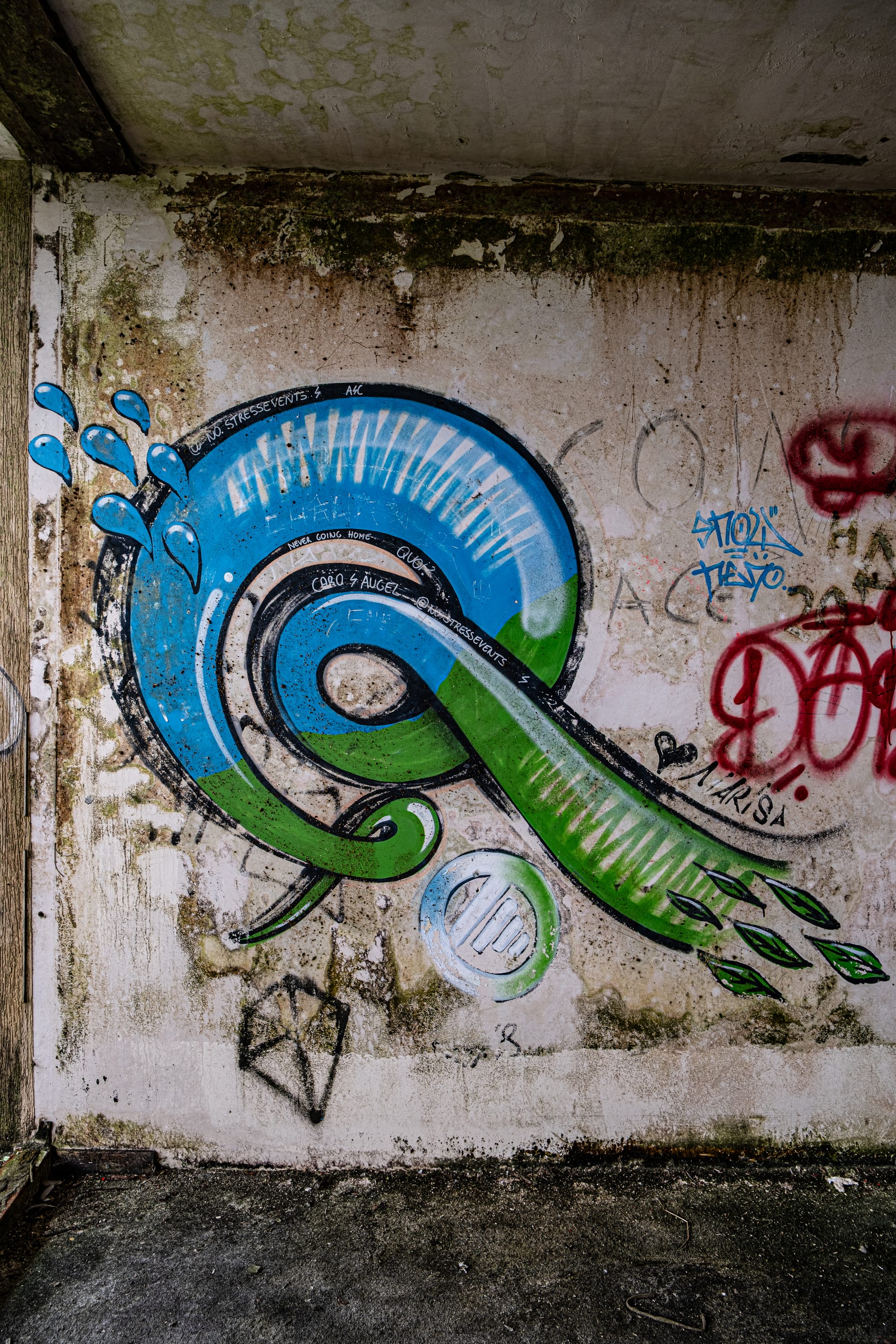
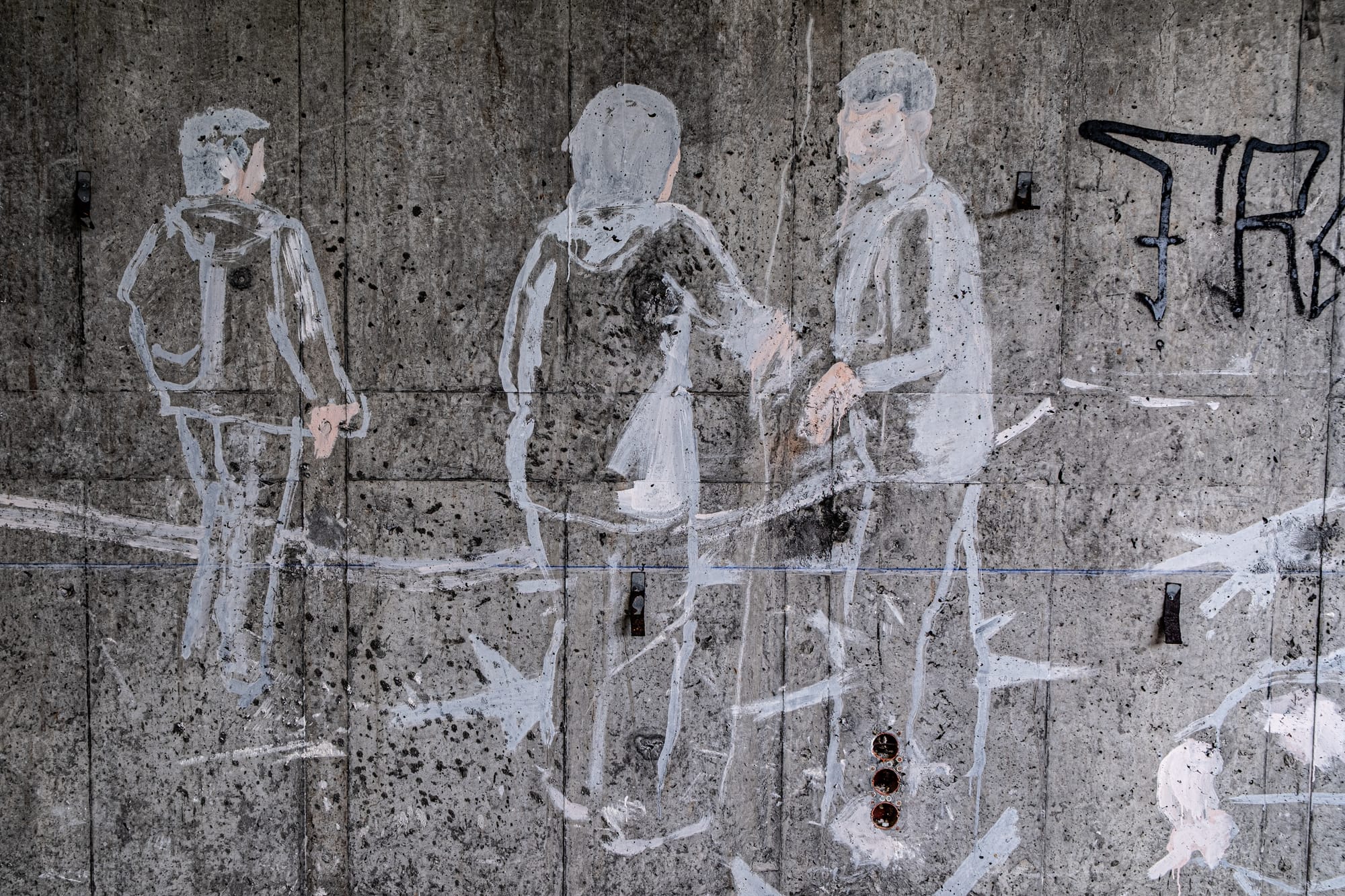
A sampling of mural textures inside Monte Palace, from abstract geometry to hand-drawn silhouettes
Some murals feel intimate, others feel confrontational. Many are left unsigned. It’s a gallery with no curation, no entry fee, and no schedule.
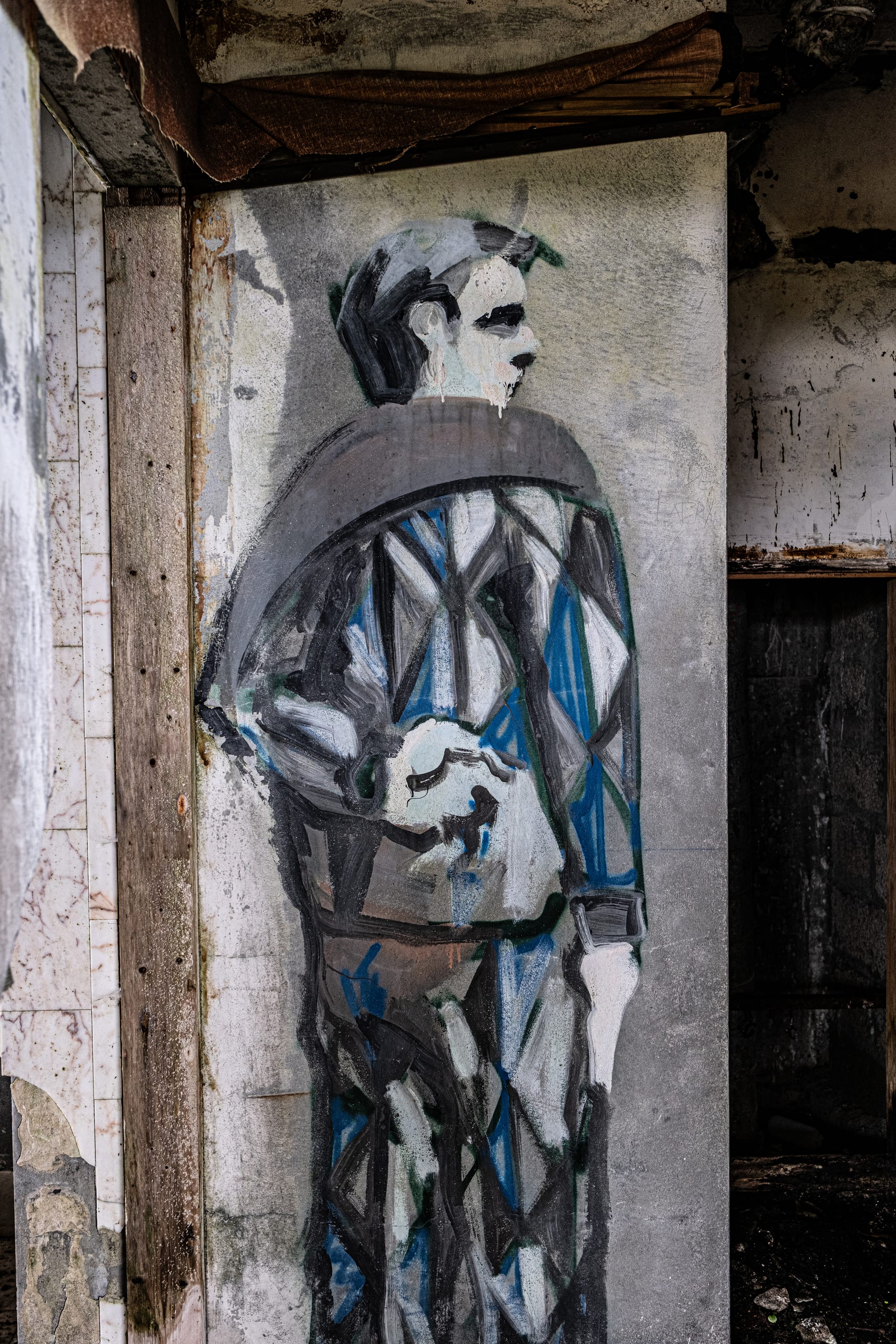
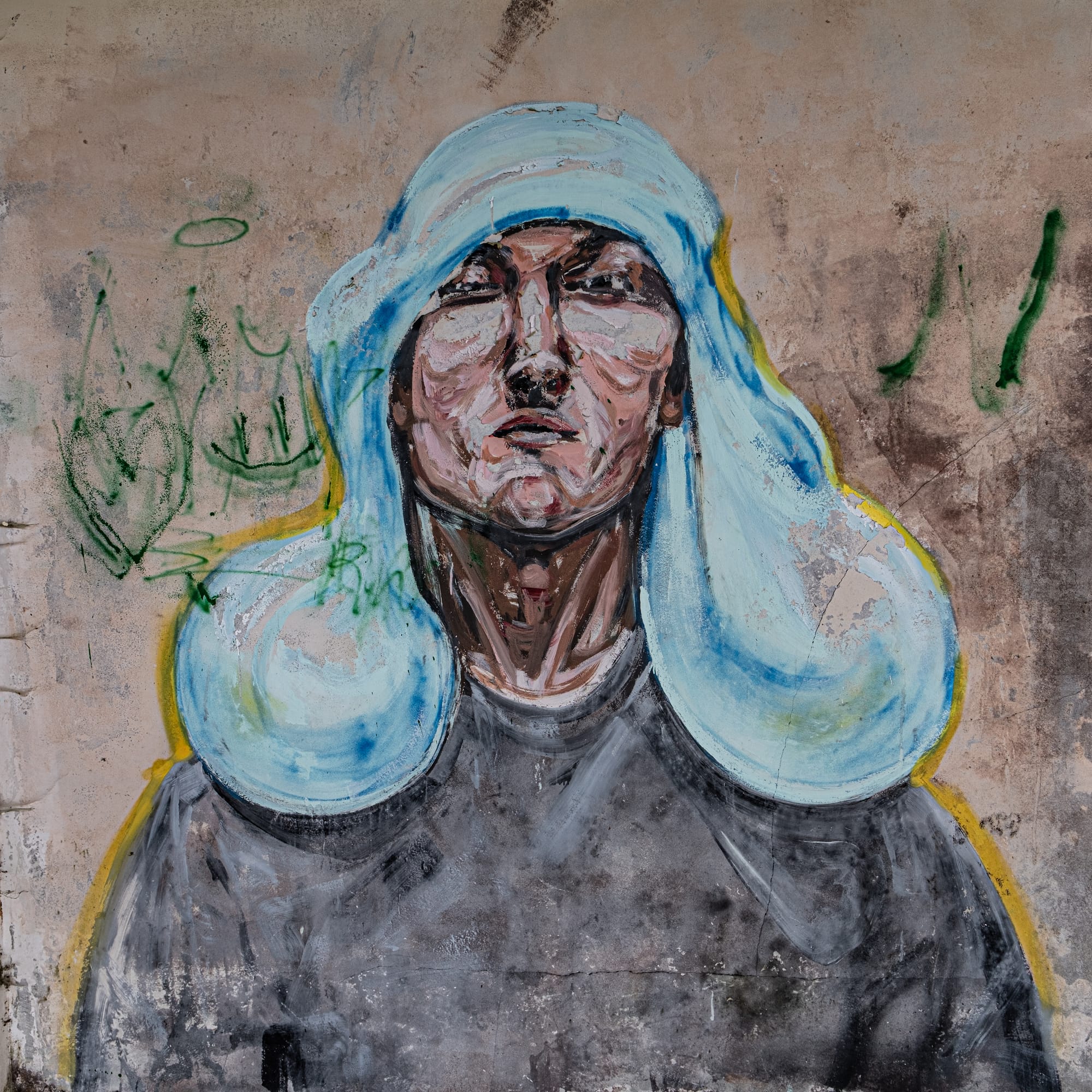
Figures from a haunted fresco—stylized, spectral, and caught in mid-thought
One of the most compelling aspects is the uncertainty. You climb a stairwell with broken steps, turn down a hallway with cracked tiles, and peek into rooms to see what remains. Sometimes, there’s just dust and silence. Other times, there’s a face staring back from the wall. You never know which rooms hold something, and which don’t.
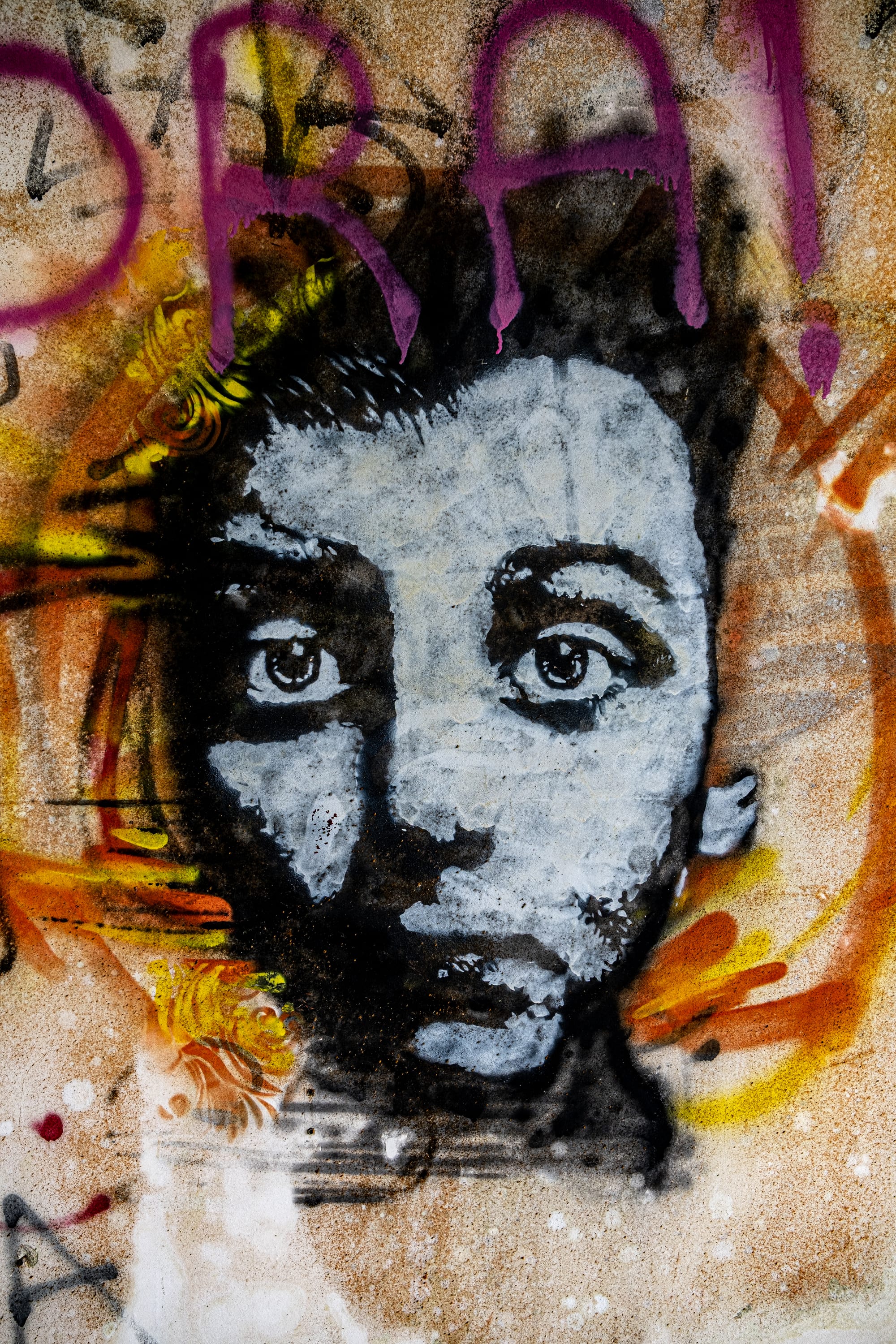
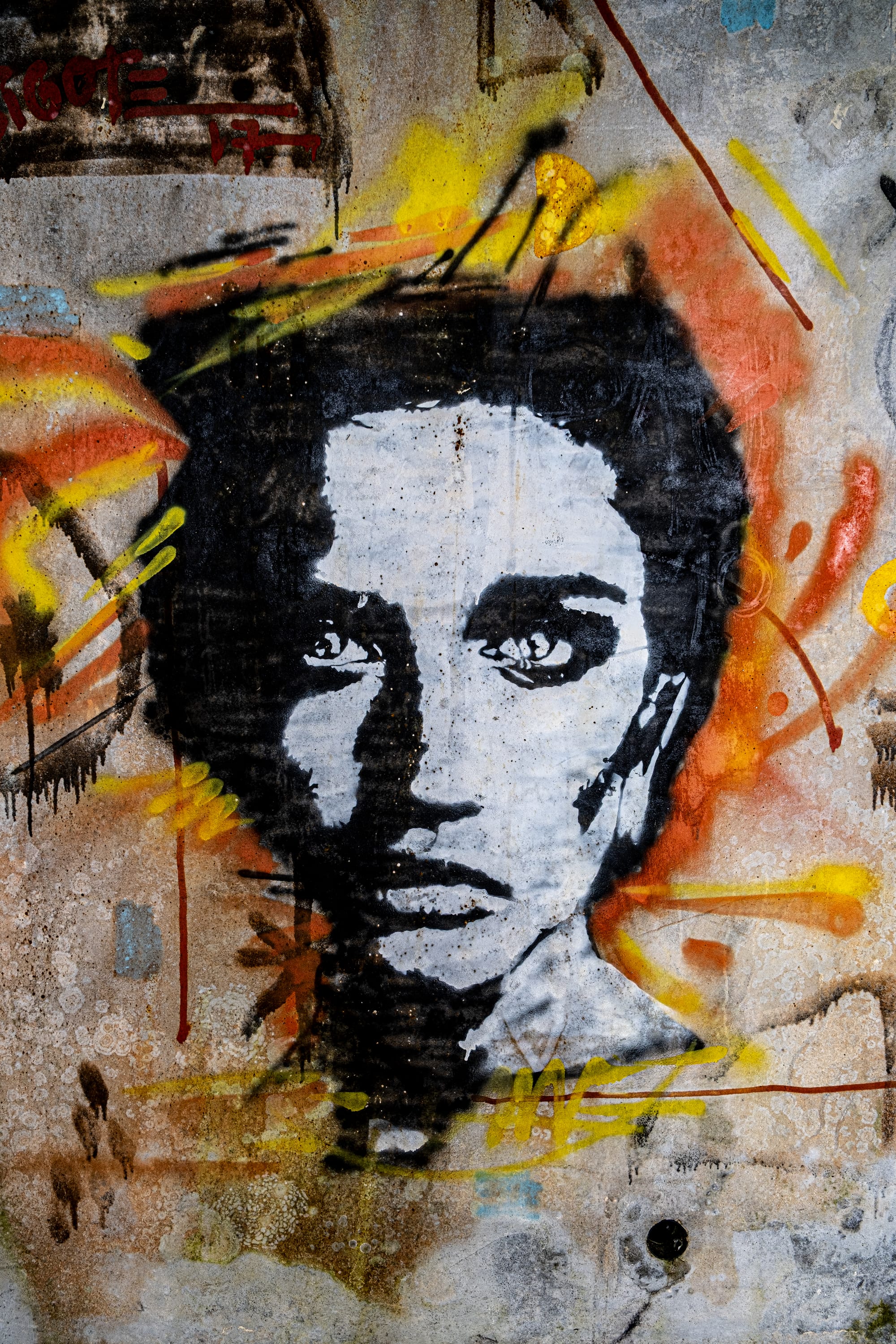
Stenciled portraits on scorched walls—faces full of heat, longing, and unfinished dialogue
That thrill of not-knowing becomes part of the experience.
The architecture as atmosphere
The Monte Palace is not beautiful in a conventional way. Its concrete form is rigid and brutalist, with sharp lines, deep overhangs, and recessed balconies. But in this context—surrounded by hydrangeas, pine trees, volcanic slopes, and an ever-changing sky—it feels strangely poetic.
Nature has not yet overtaken it, but it’s present. Ivy climbs the stairwells. Moss grows on handrails. The wood of doors has swollen and splintered. In places, the scent of moisture and vegetation is heavy.
The building is tiered, cascading down the hill in wide, stepped floors. At the base is a long, colonnaded corridor where graffiti clusters most densely. Some of the pillars are covered in bright, saturated shapes—others in soft, washed-out portraits. There's a sense of architectural rhythm, almost like a repeating refrain of emptiness and gesture.
Looking up from the forest below, the hotel almost blends into the hillside.
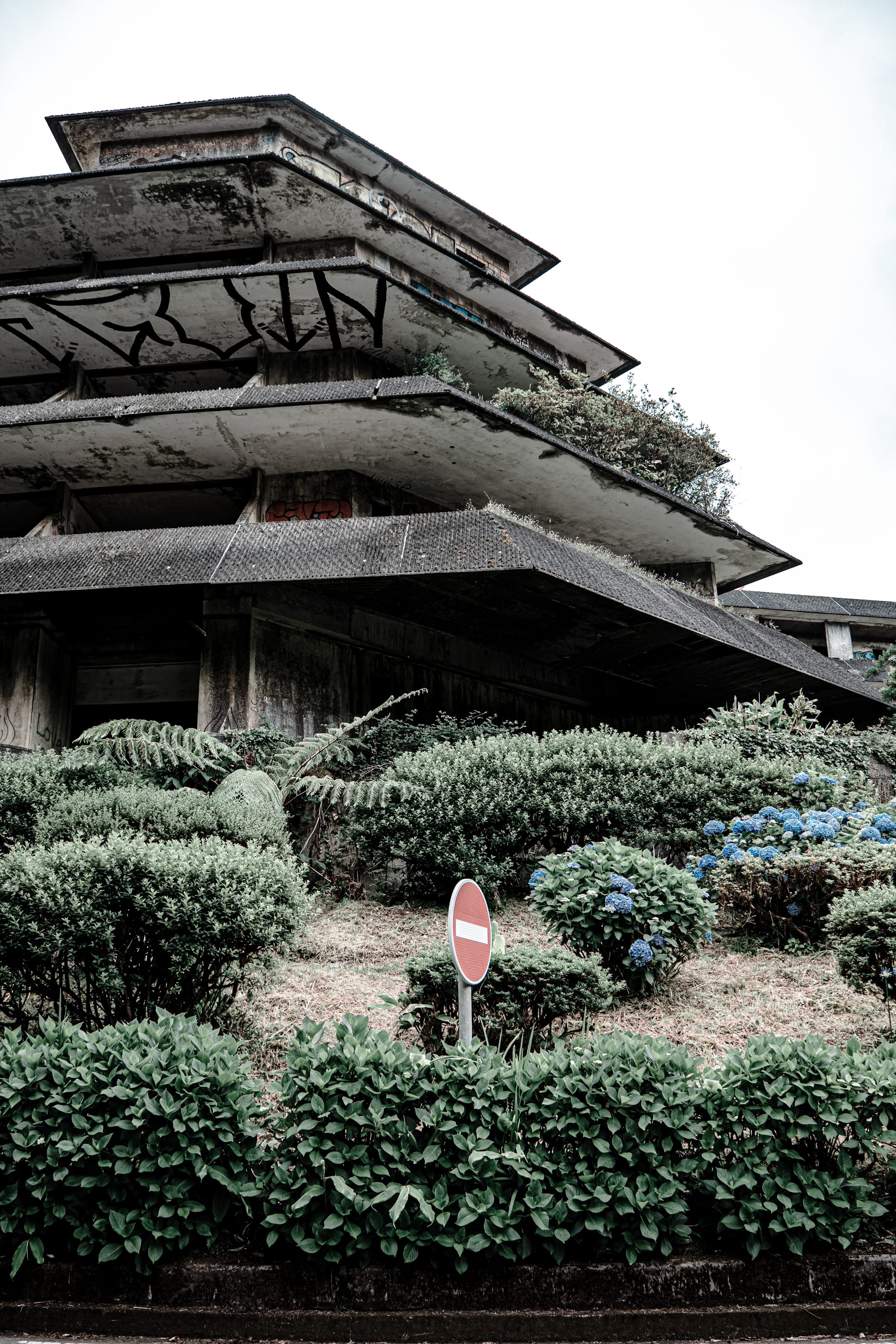
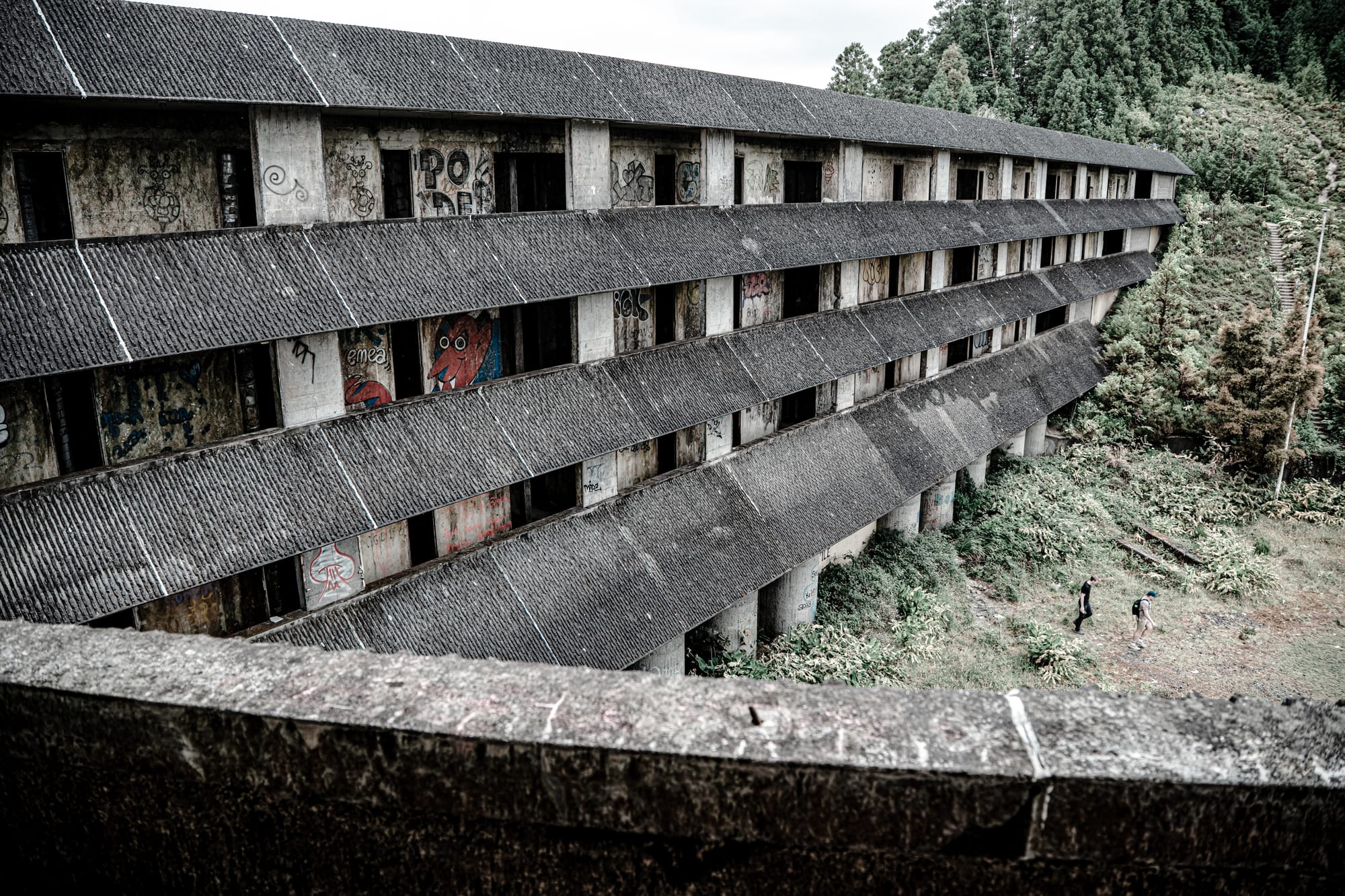
Brutalist wings and overgrown tiers—the Monte Palace emerges like a ruin in slow motion
It’s a structure out of time—a relic from the past that now feels like it belongs to an entirely different world.
Safety, solitude, and the draw of decay
It’s worth noting that the Monte Palace is not a managed ruin. There are no safety rails. No staff. No warnings. The stairs are uneven, and the floors, in places, are warped and damp. Anyone exploring the building should do so carefully and with full awareness.
But despite its hazards, the hotel draws a steady stream of curious visitors. Some come for the view. Others for the murals. Many come simply to experience the atmosphere of the place—a feeling of stillness and strangeness that’s difficult to find elsewhere.
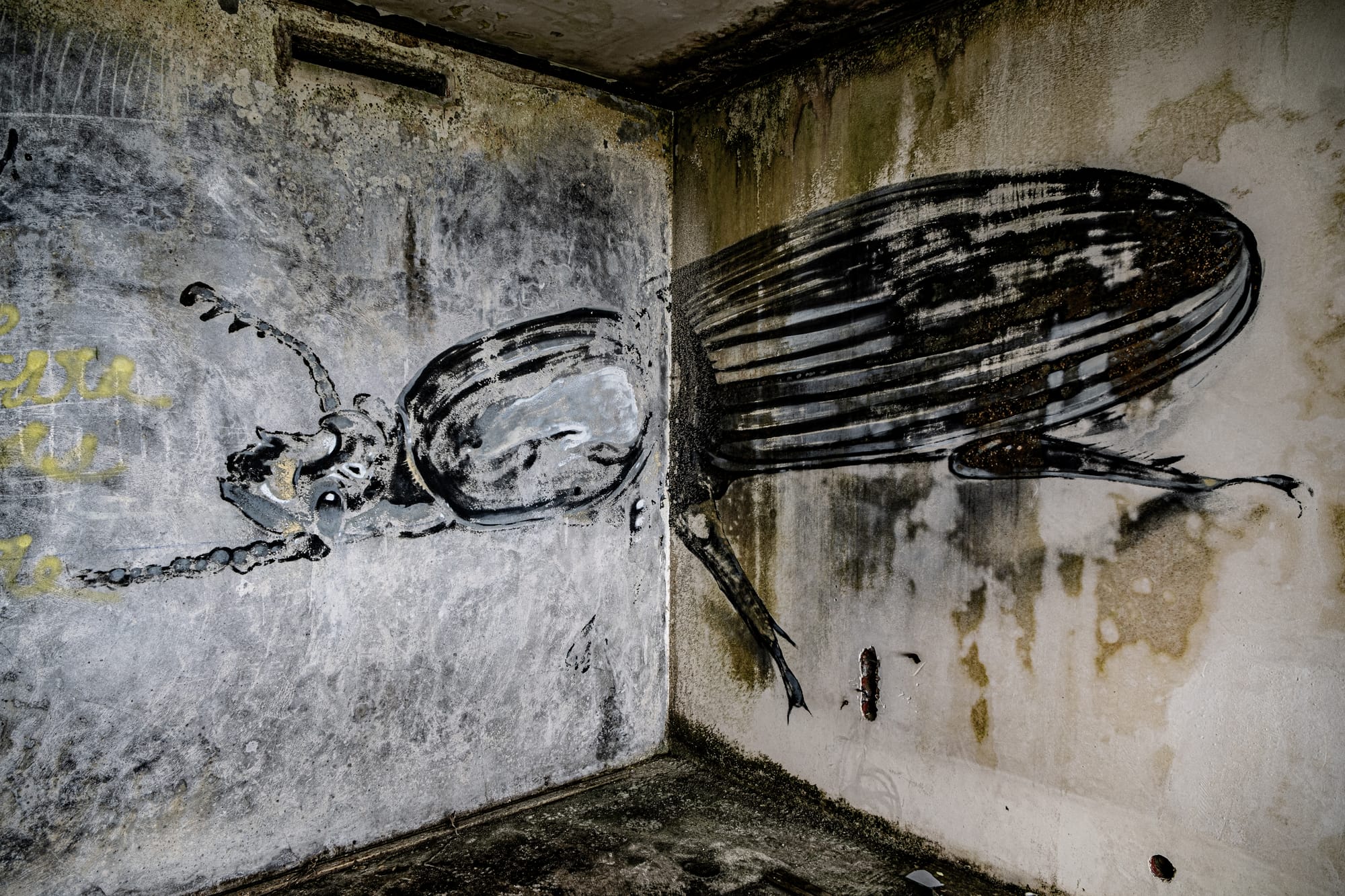
On a misty morning, with clouds moving quickly across the lakes below, the building can feel like a kind of observatory. On a bright afternoon, with sun pouring through the broken windows, it becomes a canvas of shadows and reflections.
And in the quiet, you hear small things: the creak of wood, the echo of footsteps, the rustle of eucalyptus leaves outside.
Should it be saved?
There’s been occasional discussion about restoring the Monte Palace. Turning it back into a hotel. Or transforming it into something else entirely.
But to do so would be a massive undertaking—not just structurally, but conceptually. The building as it stands now is many things at once: failed project, public artwork, architectural artifact, and informal lookout. To intervene would mean to change all of that.
Some might say it’s too dangerous to leave open. Others argue it has become a kind of cultural landmark—one that belongs to the island’s unofficial history, not its tourism economy.
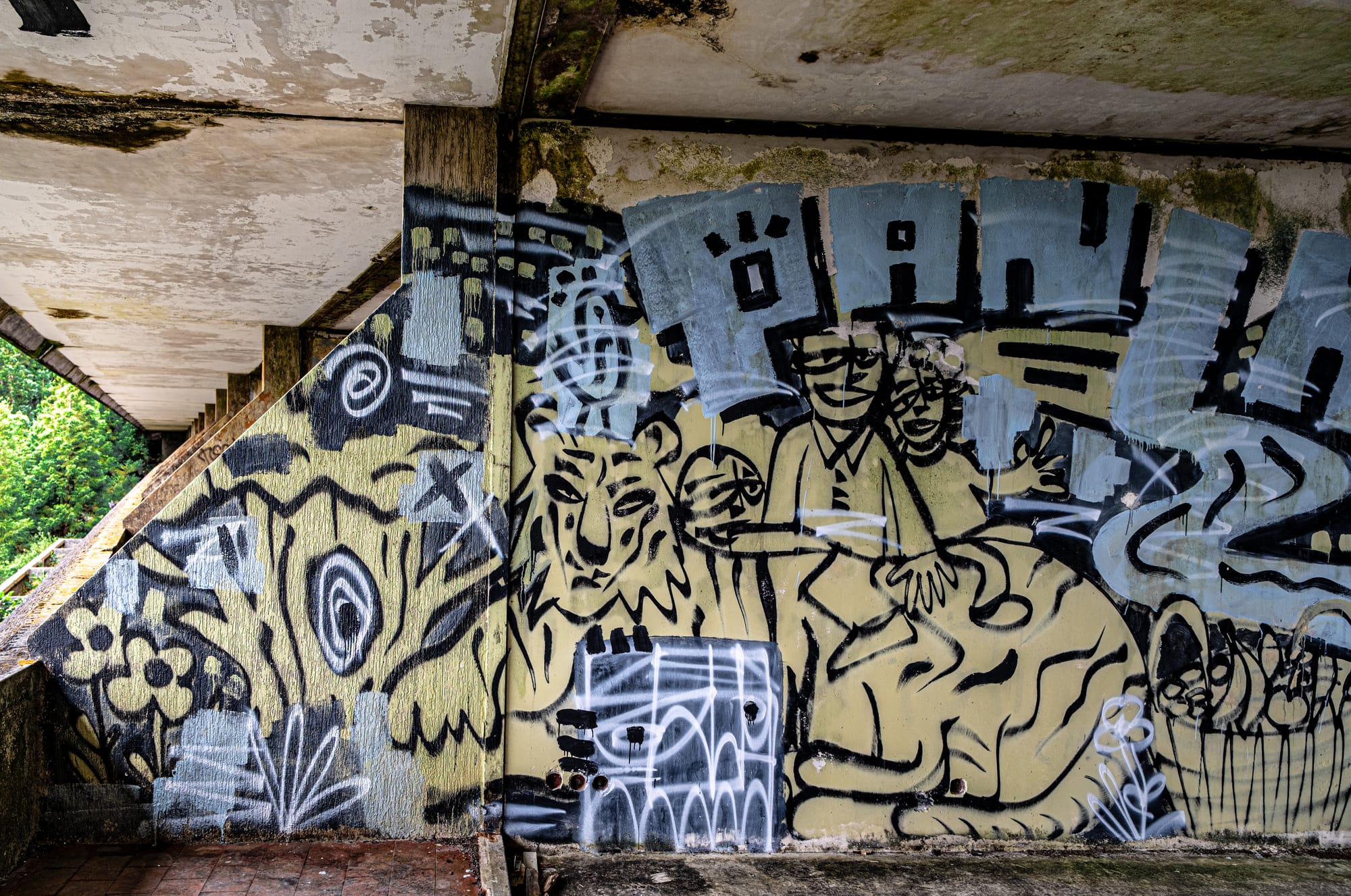
What’s certain is that it evokes something powerful: a sense of mystery, a layered beauty, and a mood that lingers long after you’ve left.
If you go
The Monte Palace is located just beside the main lookout over the lakes of Sete Cidades. There’s a parking lot near the viewpoint, and the building is easily accessed on foot. It’s unmarked, but impossible to miss.
Visitors should use caution—watch for unstable surfaces, sharp edges, and slick floors, especially after rain. A flashlight can be helpful for darker hallways. And shoes with good grip are a must.
But if you’re drawn to atmospheric spaces, improvised art, and quiet surprises, the Monte Palace offers something singular. It’s full of stories.
Take it slow—there’s more to see here than first appears.






